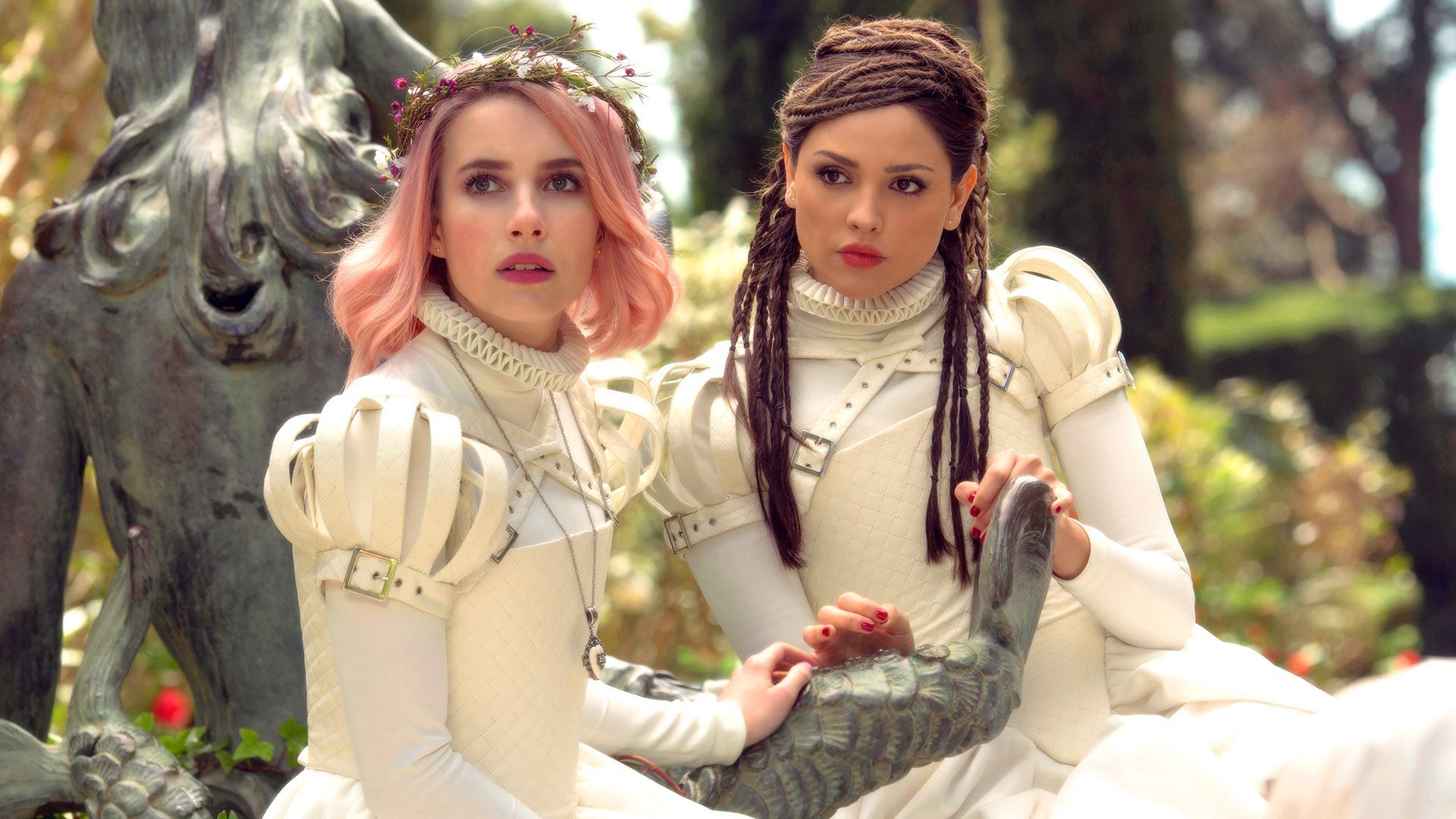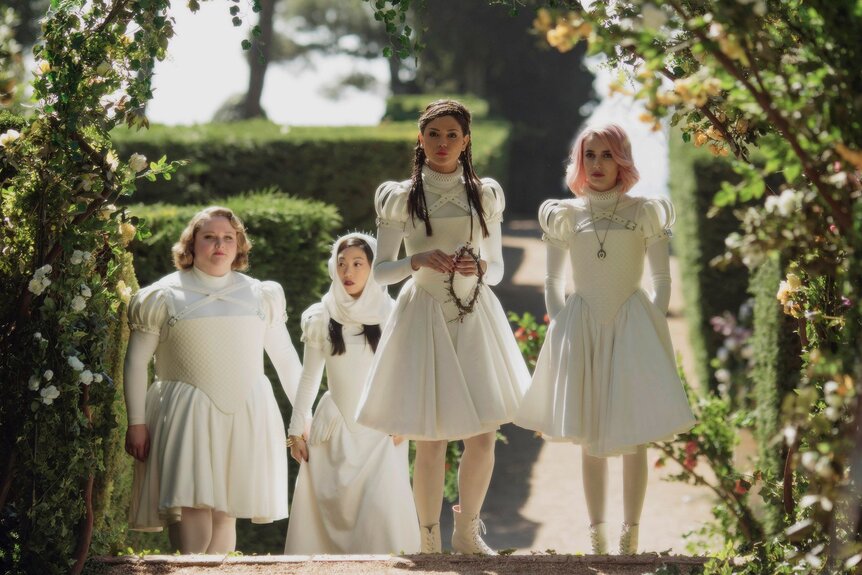Director Alice Waddington talks Paradise Hills and the patriarchy-smashing power of pink

From its first released image, Paradise Hills grabbed attention with its boldly girly aesthetic. It doesn't look like your standard dystopian drama. There are no dirt-covered ruffians, leather-cloaked antiheroes, or henley-sporting teens scraping by for survival. Instead, director Alice Waddington has conceived a dystopia that's pretty in pink, but no less dangerous.
Following Paradise Hills' Canadian premiere at Fantasia International Film Festival, SYFY WIRE FANGRRLS spoke with Waddington about the film's unique look, its influences and its feminist messaging.
Paradise Hills stars Emma Roberts, Eiza González, Danielle Macdonald, and Awkwafina as a batch of rebellious young women who've been sent to the titular reform school to make some major adjustments. Run by the rose-loving Duchess (Milla Jovovich), the school offers makeovers, yoga, therapy sessions, and elegant dining. But as the days pass by, its students become increasingly suspicious that something more sinister lurks beneath the cheery exterior of canopy beds, blooming gardens, and dazzling white uniforms.
With a background in fashion photography and costume design, Waddington saw the wardrobe of her heroines as a crucial element of visual storytelling. "We tried to design the film by doing a lot of scrapbooking," she said, explaining how she presented her costume designer Alberto Valcárcel ("truly a genius") with a scrapbook of influences she wanted to be folded into her vision. "There are Edwardian references. There are Victorian corsetry references. There are references from the world of ballet; The Red Shoes have a place in important visual references of the story, for example. Then there's reference from video games, such as Final Fantasy and Blood War. There are references from 1980s music videos. And there are references from Japanese Lolita fashion."
The blend of visual styles gives Paradise Hills a dreamy quality that edges into unease, such as pretty white dresses that are strapped with hard braces. This visual cue of being restrained is echoed in the students' tight corsetry and the canopy beds "shaped like cages." Essentially, the remote island where the reform school sits is one giant gilded cage, where students are forced to conform to a ruthlessly narrow version of womanhood. "At the end of the day, we're telling a story of repression and specifically feminine repression," Waddington said. "So that was very important to us in our [design]."
To that end, pink becomes a crucial color to the film's design. Pink roses burst throughout the school, wrapped around pillars in hallways and classrooms. The students sleep in pink beds and eat under pink lamps that shine on pink tablecloths. And most notably, pink is the color chosen for the protagonist Uma's hair during her Duchess-designed makeover. The color that's come to symbolize femininity in 20th-century America infuses the film. But Waddington's reasoning goes deeper than the silly societal dictate that pink is for girls.
"I think that any female-identifying person can understand the infantilization the women are subjected to in order to sort of render them powerless," Waddington said. Considered feminine, pink tends to paint women as soft, pretty, and fragile things, like the Duchess's roses. But roses shouldn't be underestimated. They also have thorns. Over the course of the film, Waddington pushes the color into a space of rebellious hyper-femininity.
"I always found that when you went out in public dressing in all pink or like a frilly dress and what people would probably call a Little Bo Peep hat, and the whole shebang," Waddington began, describing Japanese Lolita fashion, "people are very disturbed that you were occupying a space that was marked as female with such confidence and such a baroque style. It's very confrontational, pink. The use of hyper-femininity can be very confusing in the sense that we are supposed to comply with it as women, but not so much that it becomes overwhelming or obvious."
Essentially, a bit of pink might play to the patriarchal standards of soft, submissive women who are chiefly pretty objects to be adored, obtained, or taken. But a lot of pink pushes into hyper-femininity, which reflects autonomy and pride in femininity that threatens the male supremacy of the patriarchy.
Pink can be a rebellion.
Discover the world of the Duchess and the power of pink when Paradise Hills hits theaters on November 1.




























